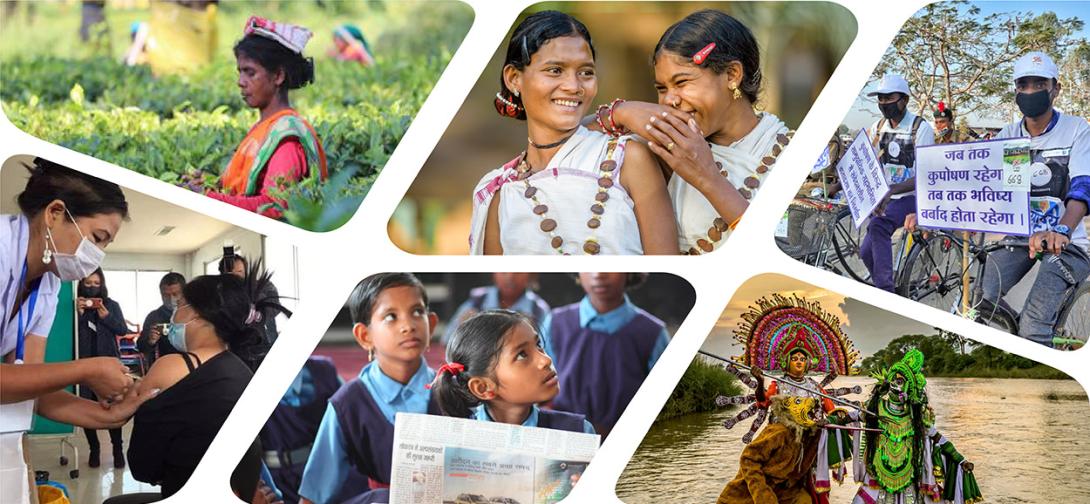In Bihar’s Alleys: Transformation at Grassroots
"Beta, where is the tiger?"
One of the kids excitedly holds my hand and indicates towards the alphabet ‘T’ which has a tiger painted below it, while another one points towards ‘L’ with a lion painted.
"That is a lion, sher, tiger is baagh."
Confused but still gleeful, the child shows me other beautiful pictures painted in her classroom. Looking around, I could not help but be impressed by the intricately painted visuals around the room.
What makes this even more impressive is that this is not a fancy private school in Delhi but a small school in one of the most under-served districts of the country—Sheikhpura, Bihar.
Around 120 km from the capital city of Patna, Sheikhpura has seen a slow pace of development due to lack of industrialization and skilled labor. Falling groundwater levels and water scarcity also pose challenges to a primarily agriculture-driven economy and the district is faced with conflicting developmental agendas in the face of limited resources. However, the district’s designation as an aspirational district has helped mobilize resources and supplemented the district administration in implementing several targeted programmes for accelerating development.
A quick glance at Sheikhpura’s indicators over the last year reveals significant improvement in learning outcomes in English and mathematics. In my interactions with schoolteachers and district officials, many attributed the success to an increased use of visual-learning aids and stronger school communities.
Multiple initiatives such as the revival of libraries, BaLA and formation of Baal Sabhas and Baal Sansads have led to renewed motivation in teachers and students. Baal Sabhas encourage students to organise activities such as quizzes and plays at school and community level. A combination of these is helping students develop leadership and soft skills and improving community participation.
The other lever of Sheikhpura’s transformation is jan andolan, led particularly by women. Prejudices around breastfeeding, menstruation and lack of awareness about nutrition needs during pregnancy have led to the district lagging on several key indicators. To handle this, the district is concentrating on increasing participation of communities, panchayati raj institutions and inter-faith leaders. The district has already seen significant improvement in indicators around maternal and infant health. As captured by NITI Aayog’s surveys, the percentage of pregnant women receiving 4 or more antenatal care check-ups increased from 10% to 32% over 2018–19. Data from the same surveys show a drop in the percentage of low-weight babies from 34% to 19%.
A key initiative in this direction has been the setting up of 30 model village health sanitation and nutrition days at anganwadi centres, which include interventions in the areas of antenatal care and immunization. In addition, these centres regularly hold community initiatives such as annaparashan diwas and godbharai for increasing awareness around nutrition needs for pregnant women and infants. Events such as these serve as icebreakers for women to discuss common issues and overcome social barriers.
Sheikhpura’s journey as aspirational district is faced with multiple hurdles like low-quality data and lack of human resources, such as specialist doctors and teachers. The recently launched Mission Parivartan, with its well-defined and time-bound targets, is targeted towards resolving issues in such problem areas and accelerating the pace of development.
The road ahead for Sheikhpura is long and difficult but commitment towards the cause is visible in the dynamic environment of the district. The hope is that the bright-eyed students of Sheikhpura will one day brim with as much pride for their district as they do for their lovely classrooms.
*Rishika Surya is a Young Professional, NITI Aayog. Views expressed are personal.
 National Portal Of India
National Portal Of India 

